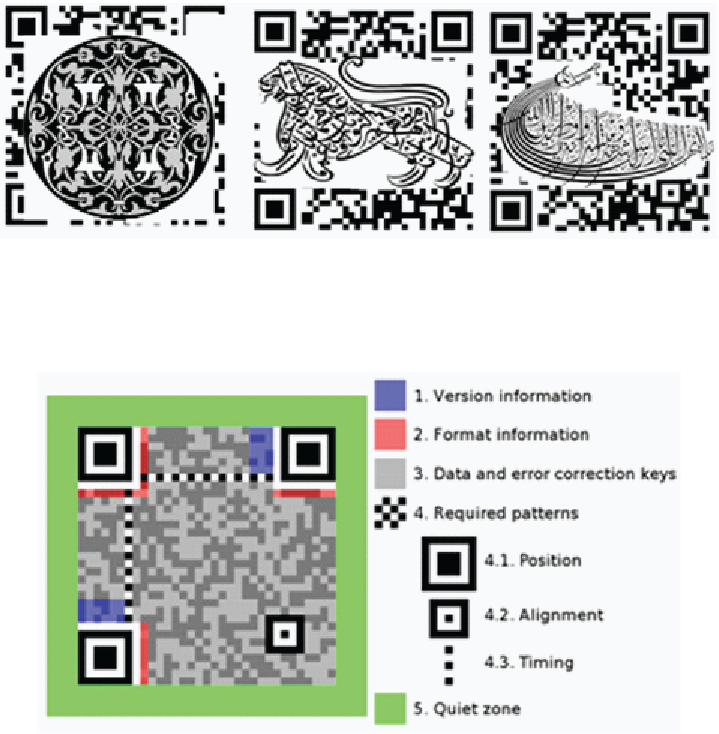Graphics Reference
In-Depth Information
Figure 20. Fatma Alabdullaziz: selected cards for a deck of playing cards (© 2012, F. Alabdullaziz.
Used with permission)
Figure 21. Structure of a QR code, highlighting functional elements (© 2012, Creative Commons
Attribution-Share Alike License)
In a similar way as in Figure 19, the design
for playing cards shown on Figure 20 combines
traditional Arabic design with the QR code signs.
It shows a variety of cultural icons from several
cultures interwoven with the matrix barcodes
called images of the quick response codes (QR
codes - Figure 21). There is a strong impact
in juxtaposing old cultural symbols with the
contemporary QR code matrices designed to be
detected as a 2-dimensional digital image by a
semiconductor image sensor and then digitally
analyzed by a programmed processor. The first
known topic on cards called
Yezi Gexi
was alleg-
edly written by a woman from the Tang Dynasty
(618-907 AD) (Needham, 1962), while QR codes
have been used and printed on Chinese train tickets
since late 2009.
Figure 21 presents a quick response code (QR
code) - a matrix barcode consisting of black
modules (square dots) arranged in a square pattern
on a white background, with an explanation of its
structure (Wikipedia, 2012). QR codes became a
part of the playing card design presented in Figures
9 and 10.
See Table 8 for Your Visual Response.

